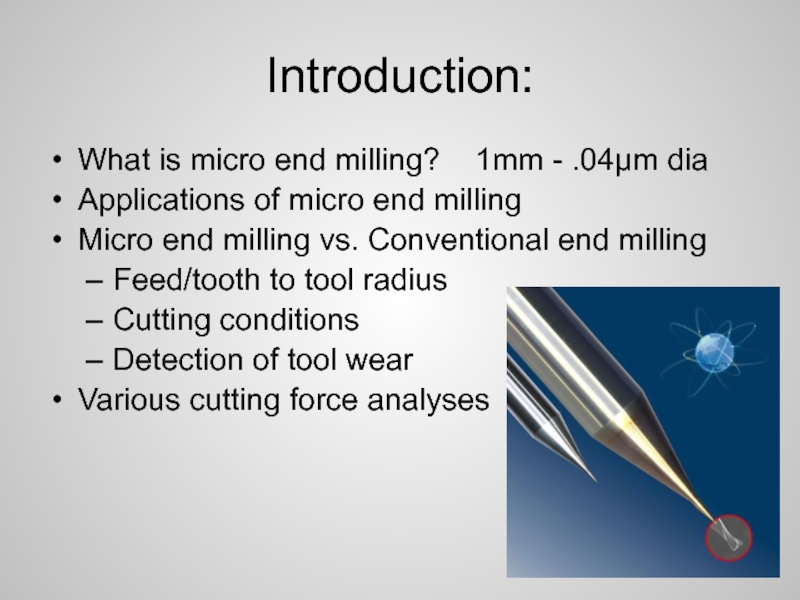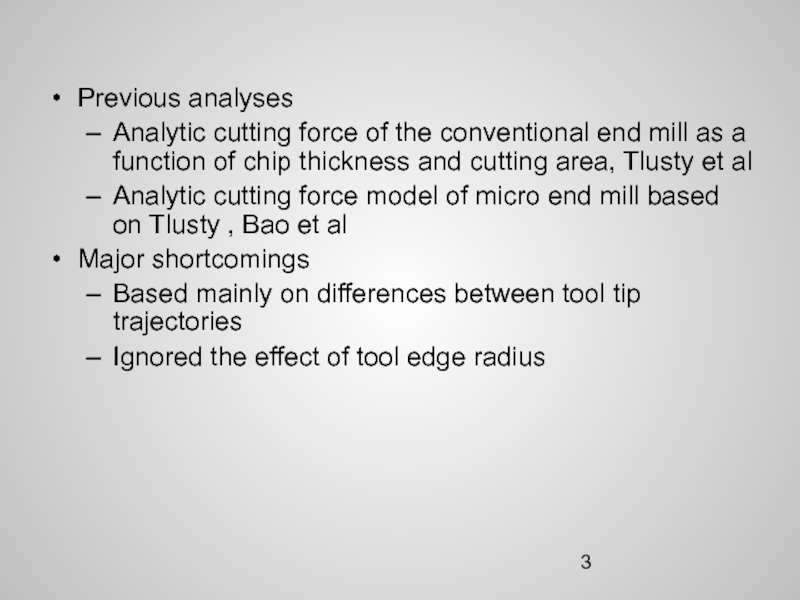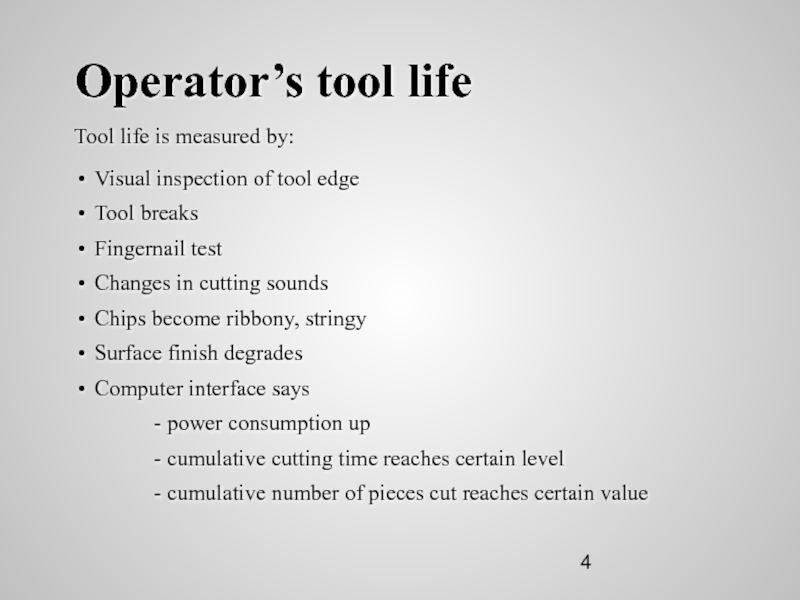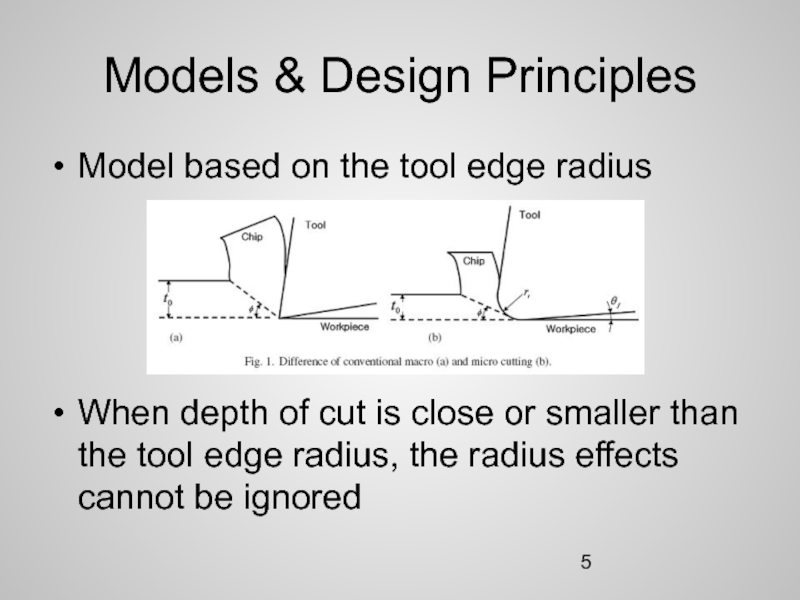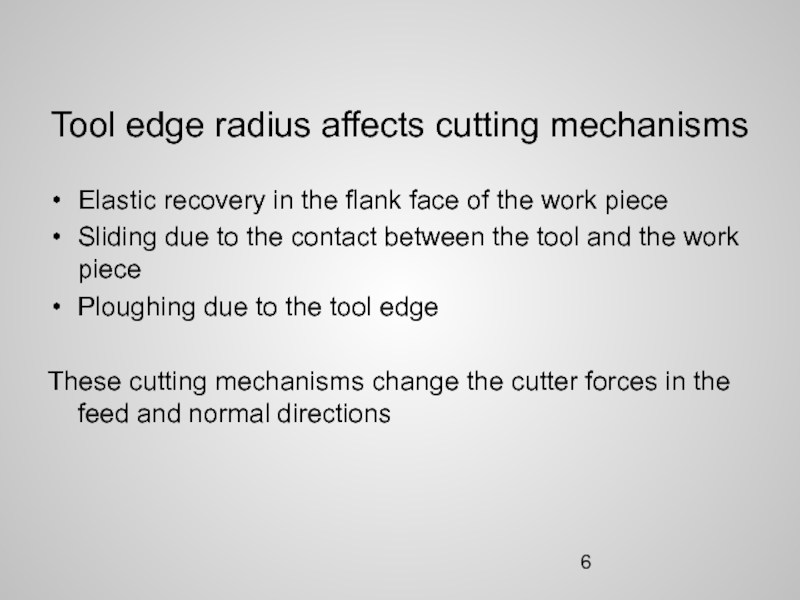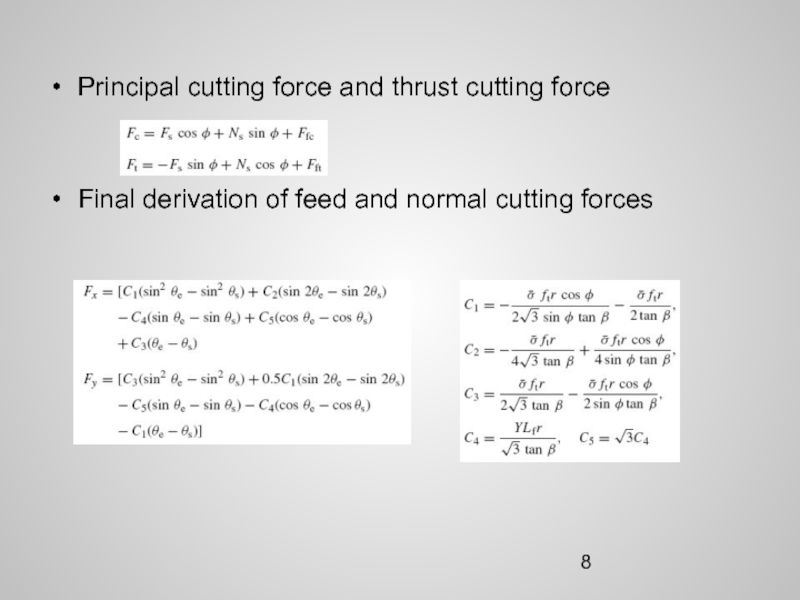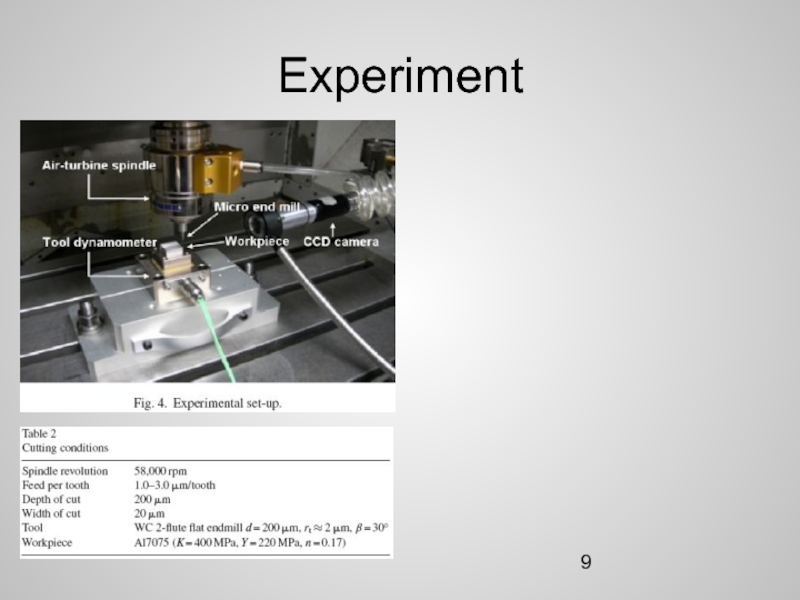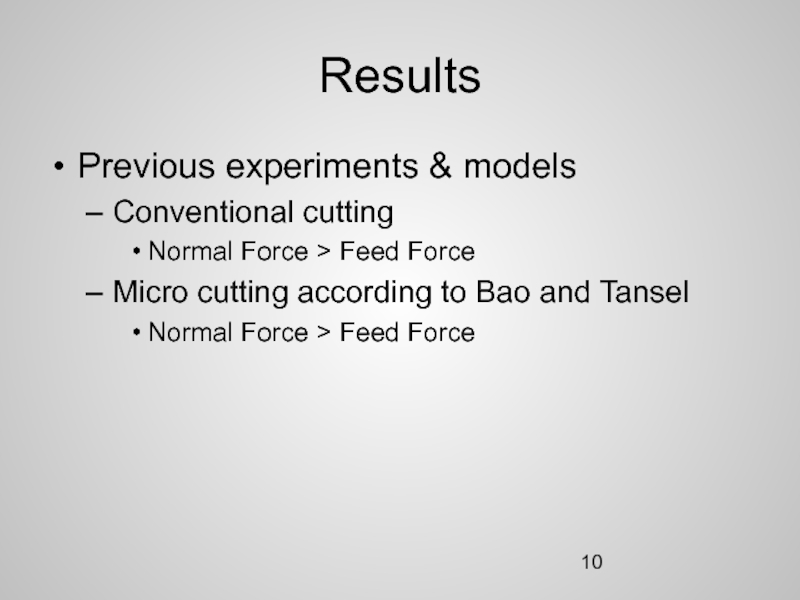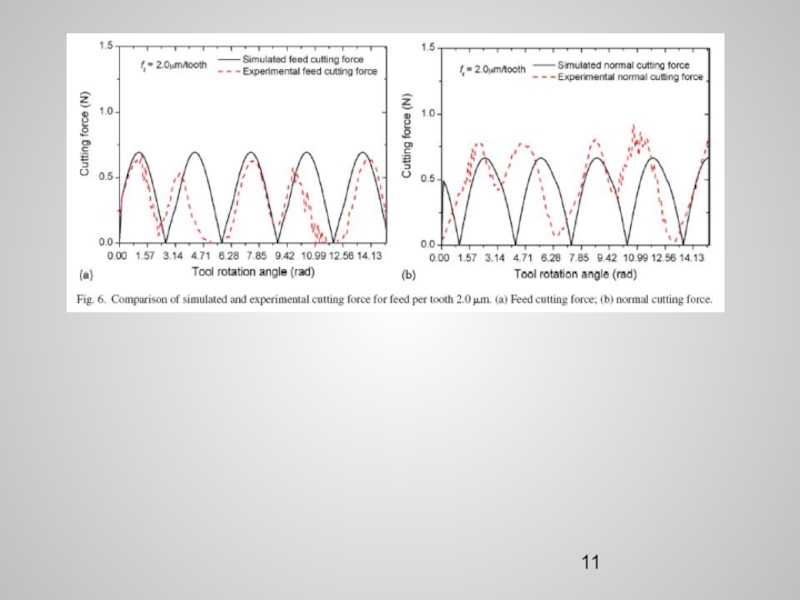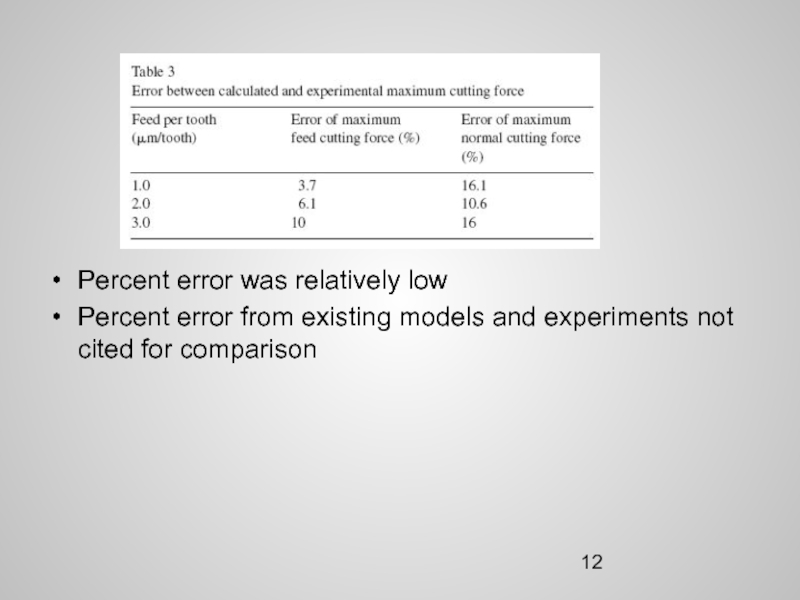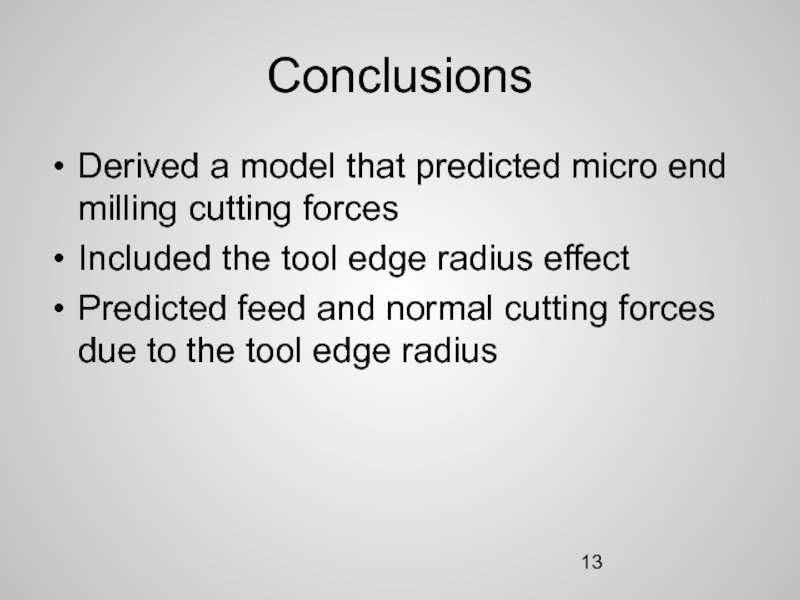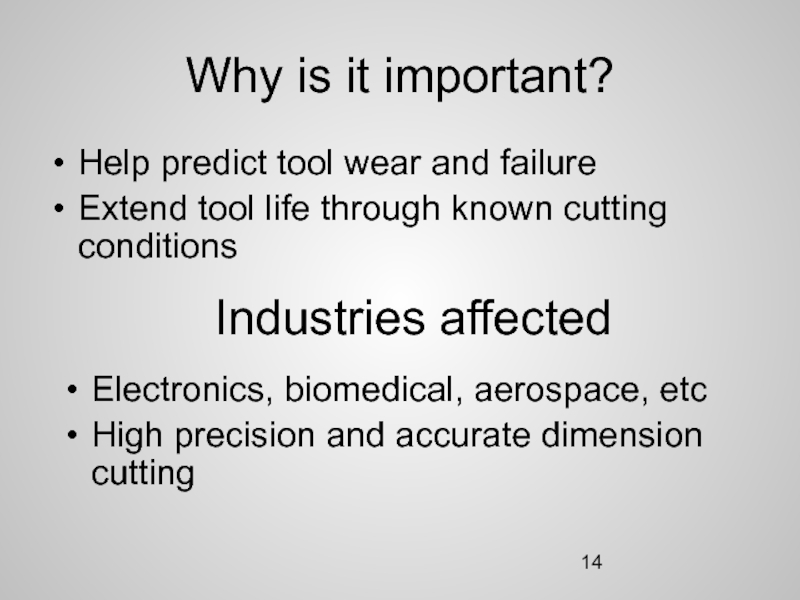Corey Christensen
10/10/2007
- Главная
- Разное
- Дизайн
- Бизнес и предпринимательство
- Аналитика
- Образование
- Развлечения
- Красота и здоровье
- Финансы
- Государство
- Путешествия
- Спорт
- Недвижимость
- Армия
- Графика
- Культурология
- Еда и кулинария
- Лингвистика
- Английский язык
- Астрономия
- Алгебра
- Биология
- География
- Детские презентации
- Информатика
- История
- Литература
- Маркетинг
- Математика
- Медицина
- Менеджмент
- Музыка
- МХК
- Немецкий язык
- ОБЖ
- Обществознание
- Окружающий мир
- Педагогика
- Русский язык
- Технология
- Физика
- Философия
- Химия
- Шаблоны, картинки для презентаций
- Экология
- Экономика
- Юриспруденция
A Mechanistic Model of Cutting Force in the Micro End Milling Process презентация
Содержание
- 1. A Mechanistic Model of Cutting Force in the Micro End Milling Process
- 2. Introduction: What is micro end milling?
- 3. Previous analyses Analytic cutting force of
- 4. Operator’s tool life Tool life is
- 5. Models & Design Principles Model based on
- 6. Tool edge radius affects cutting mechanisms Elastic
- 7. Contact length of the tool on the
- 8. Principal cutting force and thrust cutting force
- 9. Experiment
- 10. Results Previous experiments & models Conventional cutting
- 12. Percent error was relatively low Percent error
- 13. Conclusions Derived a model that predicted micro
- 14. Why is it important? Help predict tool
Слайд 1A Mechanistic Model of Cutting Force in the Micro End Milling
Process
I.S. Kang, J.S Kim, J.H. Kim, Y.W. Seo
Слайд 2Introduction:
What is micro end milling? 1mm - .04µm dia
Applications of
micro end milling
Micro end milling vs. Conventional end milling
Feed/tooth to tool radius
Cutting conditions
Detection of tool wear
Various cutting force analyses
Micro end milling vs. Conventional end milling
Feed/tooth to tool radius
Cutting conditions
Detection of tool wear
Various cutting force analyses
Слайд 3Previous analyses
Analytic cutting force of the conventional end mill as
a function of chip thickness and cutting area, Tlusty et al
Analytic cutting force model of micro end mill based on Tlusty , Bao et al
Major shortcomings
Based mainly on differences between tool tip trajectories
Ignored the effect of tool edge radius
Analytic cutting force model of micro end mill based on Tlusty , Bao et al
Major shortcomings
Based mainly on differences between tool tip trajectories
Ignored the effect of tool edge radius
Слайд 4Operator’s tool life
Tool life is measured by:
Visual inspection of tool edge
Tool
breaks
Fingernail test
Changes in cutting sounds
Chips become ribbony, stringy
Surface finish degrades
Computer interface says
- power consumption up
- cumulative cutting time reaches certain level
- cumulative number of pieces cut reaches certain value
Fingernail test
Changes in cutting sounds
Chips become ribbony, stringy
Surface finish degrades
Computer interface says
- power consumption up
- cumulative cutting time reaches certain level
- cumulative number of pieces cut reaches certain value
Слайд 5Models & Design Principles
Model based on the tool edge radius
When depth
of cut is close or smaller than the tool edge radius, the radius effects cannot be ignored
Слайд 6Tool edge radius affects cutting mechanisms
Elastic recovery in the flank face
of the work piece
Sliding due to the contact between the tool and the work piece
Ploughing due to the tool edge
These cutting mechanisms change the cutter forces in the feed and normal directions
Sliding due to the contact between the tool and the work piece
Ploughing due to the tool edge
These cutting mechanisms change the cutter forces in the feed and normal directions
Слайд 7Contact length of the tool on the work piece
Chip thickness variation
as a function of tool rotation angle θ
ft = Feed/tooth
ft = Feed/tooth
Feed and normal forces plane shear and flank face contact friction
Слайд 8Principal cutting force and thrust cutting force
Final derivation of feed and
normal cutting forces
Слайд 10Results
Previous experiments & models
Conventional cutting
Normal Force > Feed Force
Micro cutting according
to Bao and Tansel
Normal Force > Feed Force
Normal Force > Feed Force
Слайд 12Percent error was relatively low
Percent error from existing models and experiments
not cited for comparison
Слайд 13Conclusions
Derived a model that predicted micro end milling cutting forces
Included the
tool edge radius effect
Predicted feed and normal cutting forces due to the tool edge radius
Predicted feed and normal cutting forces due to the tool edge radius
Слайд 14Why is it important?
Help predict tool wear and failure
Extend tool life
through known cutting conditions
Industries affected
Electronics, biomedical, aerospace, etc
High precision and accurate dimension cutting

